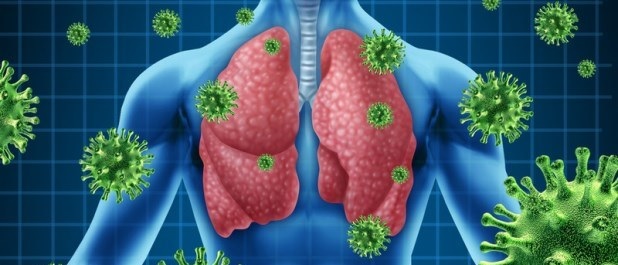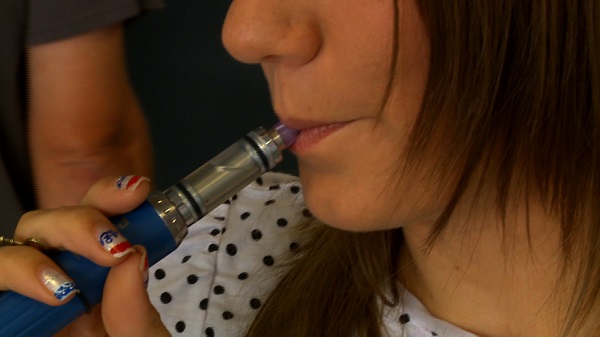
Like pretty much anything else we ingest or inhale, not everybody reacts in the same way to the constituents of e-liquid and the resulting vapor. In most cases, the only side effect is some minor throat irritation, but for some people it can be much worse.
Finding out about the potential reactions you can have to e-liquid, medications or conditions which may have an interaction with nicotine and the advice is regarding pregnancy and e-cigs helps you stay safe when you’re vaping.
Of course, this is for information only; if you’re concerned about any of the topics covered here – but understandably don’t want to go back to smoking – you should see your doctor and follow his or her advice.
Key Points
- Some vapers are allergic to PG, but it’s possible to be allergic to the other components of e-liquid too. Watch out for symptoms such as hives, rashes, wheezing, coughing, sore throat, nausea, headaches, swelling and itchy eyes.
- Switch to a PG-free (100 percent VG) e-liquid if you’re allergic to PG, and avoid any flavorings likely to cause an issue based on your experience with food.
- Check with your doctor if you have a heart condition, asthma, insulin-dependent diabetes, hyperthyroidism or other conditions such as psoriasis, or if you’re taking medicines like tricyclic antidepressants or theophylline.
- E-cigs are unlikely to be as dangerous when pregnant as smoking, but still carry some definite risks; only use if abstinence is impossible, and minimize nicotine consumption as much as you can.

The medical literature contains reports of allergy or hypersensitivity to propylene glycol, mostly involving skin exposure via cosmetics or other personal care products, but an allergy to PG is rare and unpredictable. Almost everyone has had skin exposure to propylene glycol, which was reported present in varying concentrations (0.0008 to 99%) in nearly 10,000 hair, skin and personal care products in a 2009 report from the Voluntary Cosmetic Registration Program to the FDA. For example, propylene glycol was present in 54% of 580 deodorants at a concentration of 3 to 73%.
Individuals who have a known hypersensitivity to any of these products should exercise caution in using vapor products containing PG. – Brad Rodu (Professor of Medicine, University of Louisville and blogger at TobaccoTruth)
E-Liquid, Propylene Glycol and Allergies
 E-liquid consists primarily of propylene glycol (PG), vegetable glycerine (VG), nicotine and flavorings, but in many cases, new vapers are unlikely to know if they have an allergy to the seemingly unfamiliar ingredients. It is possible to have an allergy to pretty much any component, but PG is the most common culprit. Most vapers will have no problem, but the fact that some people are allergic to PG has led manufacturers such as blu to make their liquids wholly VG-based.
E-liquid consists primarily of propylene glycol (PG), vegetable glycerine (VG), nicotine and flavorings, but in many cases, new vapers are unlikely to know if they have an allergy to the seemingly unfamiliar ingredients. It is possible to have an allergy to pretty much any component, but PG is the most common culprit. Most vapers will have no problem, but the fact that some people are allergic to PG has led manufacturers such as blu to make their liquids wholly VG-based.
There are many symptoms of PG allergy to be on the lookout for, but it’s worth mentioning that since it is used in so many different consumer products (including shampoos, cosmetics, food flavorings and asthma inhalers, as well as being vaporized in smoke machines) that you’ll probably be aware you’re allergic to something already if you have a PG allergy. That said, new allergies can develop in later life and reactions might not begin immediately, so keep an eye out for symptoms. There are many different ones reported, but ordinarily they range from sore throats, sinus problems, nausea and headaches to more severe symptoms like hives and swelling, redness and numbness of the face. Additionally, small bumps (fluid-filled or not) may form on the skin around the mouth if you’re allergic to PG.
Of course, PG may not be the culprit, but general allergy symptoms can still give you a good idea of whether you’re having a reaction to something in e-liquid. Symptoms to look out for include hives, swelling, rashes, shortness of breath or wheezing, itchy or watery eyes and excessive coughing. There may be some crossover with potential symptoms and things you’d expect from quitting smoking, so the best advice is to stop vaping for a little while and see if your symptoms improve. However, since it’s most likely a result of PG, try a 100% VG-base liquid and see if that helps. If a specific flavoring is to blame (as you may expect if you have a related food allergy), it’s best to avoid any e-liquid likely to contain the substance.

Humans come in contact with a large variety of substances and irritant or allergic (hypersensitivity) reactions may occur in predisposed individuals. Propylene glycol (PG) and its pyrolysis by-product formaldehyde are no exceptions. The majority of skin reactions to PG are irritant in nature, however, true allergic sensitization does also occur. In vapers who became sensitized, direct contact with PG may cause multiple small (1 – 2 mm) papules, pustules and vesicles around the mouth or in the oral mucosa with associated burning, stinging sensation in the affected areas. However, development of systemic symptoms after oral exposure to PG is rare. Common sense would suggest avoiding the offending agent (i.e.PG) and switching to products containing only vegetable glycerin. – Professor Riccardo Polosa
Drugs and Conditions Affected by E-Cigarettes
Although most people experience no problems from vaping, there are also certain medicines and conditions which may interact with e-cigarettes, or more specifically, the nicotine most liquids contain. However, as an ex-smoker, you’re likely to be aware of any potential problems relating to a health condition already. For example, psoriasis (a skin condition) is often worsened by smoking, and this is assumed to be related to the action of nicotine. Some psoriasis-suffering vapers have reported increased problems, so it’s worth a visit to the doctor if you’re concerned.
However, as Dr. Polosa (Professor of internal and emergency medicine and specialist in respiratory medicine, allergies and clinical immunology) points out, quitting smoking without vaping may lead to the same issues:
“I am surprised to learn that some people have reported worsening of psoriasis after they started vaping. This is most unusual because worsening of psoriasis is known to be due to the increased stress; this is more likely to occur when attempting unaided quit attempts. On the other hand, nicotine has been reported to alleviate symptoms of psoriasis.”
Other conditions such as chest pain, heart conditions (including arrhythmias, angina and recent heart attacks), stomach ulcers, asthma, diabetes (if using insulin), liver or kidney disease and hyperthyroidism may also be affected. E-cigs do appear to broadly reduce risk of health complications in comparison to cigarettes, but it’s always worth seeking medical advice if you have a condition which could be affected. However, Dr. Polosa argues that this advice may be a little over-cautious:
In compliance with the precautionary principle, vaping should be avoided in pregnancy, asthma, COPD, multiple chemical sensitivity (MCS), cardiovascular diseases and some psychiatric conditions. Given that these medical conditions are equally (if not more) contraindicated for tobacco smoking and that vaping is a much less harmful behavior compared to smoking, perhaps this “evidence-baseless” advice should be reconsidered. For example, we have recently completed a study reporting improved clinical and functional outcomes in asthma smokers after tobacco smoking abstinence with long term use of E-cigarettes. Moreover, in a recent prospective study of chronic schizophrenic patients who smoke, we have shown that regular use of E-cigarettes may substantially decrease consumption of conventional cigarettes without causing significant side effects and no apparent worsening in psychiatric symptoms.
For drugs, there are potential interactions with tricyclic anti-depressants, theophylline, furosemide, insulin, benzodiazepines, adenosine and other common medicines like phenylephrine (a decongestant), acetaminophen (Tylenol) and caffeine. The last one drives home the point that just because there’s an interaction doesn’t mean it’s one to particularly worry about (since nicotine and caffeine are widely used together) but for prescription medicines it’s always worth conferring with your doctor about the possible complications and other options.
Can I Use E-Cigs During Pregnancy?

Smoking during pregnancy has long been known to put your baby at risk, but the same can’t definitively be said for nicotine replacement therapy or e-cigs.
In practice, many physicians recommend nicotine replacement therapy to pregnant smokers because there’s a general assumption that it’s safer than smoking, but nicotine can cross the placental barrier, so it has been shown to have effects in forms other than combusted tobacco.
Studies from India have confirmed that smokeless tobacco results in reduced birth-weight, and there is evidence of an effect on the heart of the mother and fetus from nicotine replacement therapy, but the effect is small apart from in animal studies, in which very large doses are used. However, the unrefined oral tobacco used in India may make the findings worse, as similar research from Sweden has shown less of an impact on birth weight from refined “snus.”
However, there was still an impact (albeit a smaller one) on the infant in this research, as Professor Brad Rodu (from the University of Louisville) points out:
Pregnant women should refrain from using all tobacco/nicotine products. Using the best available scientific evidence, the health risks of e-cigarette use can be estimated to be 1% or less that of cigarette smoking. However, that broad statement has one important exception: pregnancy. As I have discussed in my blog, pregnant women who use Swedish snus – arguably the form of tobacco/nicotine with the safest health profile among long-term users – are at risk for slightly smaller babies, and they also have modestly elevated risks for premature delivery and preeclampsia, very premature birth and stillbirth. Because snus contains low levels of contaminants, these effects may be due to nicotine.
So, what does this all mean for pregnant vapers?
The bottom line is that it isn’t recommended to consume nicotine during pregnancy, but the reason doctors often recommend patches and gums to pregnant smokers is that it’s highly unlikely to be as big a risk to the baby as smoking.
It’s better to try to remain abstinent for the sake of caution, but if that isn’t possible, keep the doses as low as possible. Again, this is only general information based on the limited available evidence; you must ask your doctor if you’re pregnant and wondering if it’s safe for you to vape.
Research has also shown that breastfeeding mothers do also expose their babies to nicotine through their milk, but using nicotine replacement therapy is considered safer than smoking, and this advice should also hold for vaping. Again, if you’re concerned, speak to your doctor.

Pregnancy is known to be adversely affected by cigarette smoking and it is essential for pregnant women to quit smoking as soon as possible. Nicotine easily crosses the placental barrier. Most of the studies finding low birth weight and adverse effects from the use of nicotine come from studies in India, where cheap unrefined oral tobacco products are popular. On the contrary, studies in Sweden concluded that the birth weight reduction was significantly lower in ‘snus’ (a refined, low-TSNAs, oral tobacco product) users compared to light or heavy smokers. For those who cannot quit, the benefits of smoking cessation by using a cleaner form of nicotine outweigh the risks of tobacco. E-cigarettes should be evaluated in this context. – Professor Riccardo Polosa
Conclusion
Although you’ll reduce your harm overall with e-cigs, if you’re allergic to ingredients, suffer from potentially affected conditions or are pregnant, it’s a good idea to check with a physician before assuming it’s OK to vape! There is unlikely to be an issue, but in some cases it’s definitely worth erring on the side of caution.
The Complete Guide to E-Cig Safety
Part One: Beginner E-Cigs Safety
1. Safe Use of Beginner E-Cigs
2. A Guide to Safe Charging
3. Carrying Your E-Cig Safely
4. Cartomizer Safety
5. Vaping and Driving
Part Two: E-Liquid Safety
6. Basic E-Liquid Safety
7. Allergies, Conditions and E-Liquid
8. Safe Nicotine Consumption for Vapers
9. Steeping E-Liquids Safely
10. Do E-Liquids Expire?
11. E-Liquid and Tank Safety
12. DIY E-Liquid Safety
Part Three: E-Cig Mod Safety
13. Minimizing the Risk of E-Cig Mod Explosions
14. E-Cig Mod Battery Safety and Ohm’s Law
15. Rebuildable Atomizer Safety
16. Mechanical Mod Safety
17. Wick Safety
18. Drip Tip Safety

